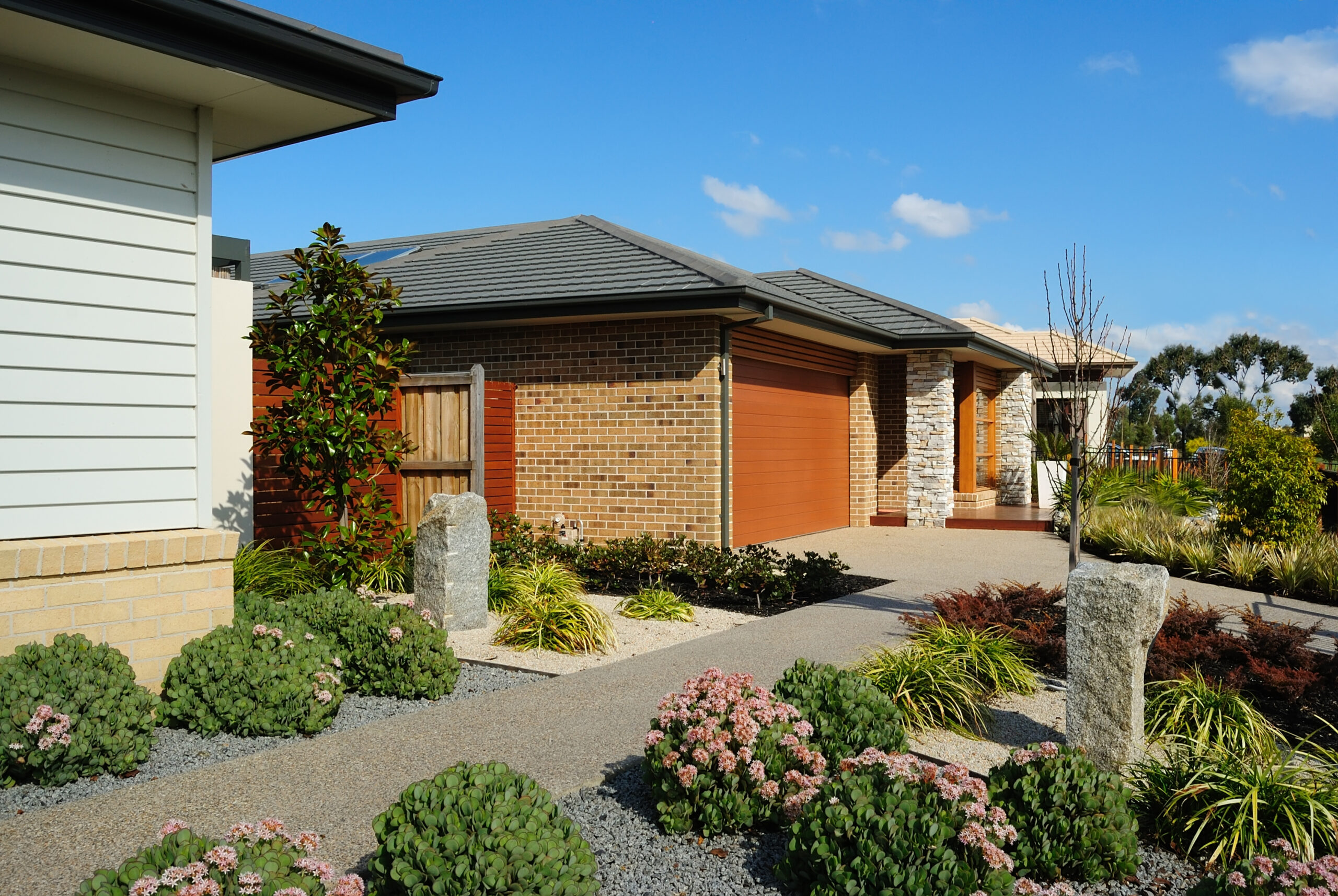
When it comes to insulation in a ceiling, the R-Value is the major factor to think about. R-Value is how thermal insulation is measured. The higher the number, the more effective the insulation is at keeping the heat in or out. Having the right R-Value of ceiling insulation in your home will help keep your home comfortable all year round.
Below we will talk about how to find out if you have ceiling insulation, and if so, what is the likely R-Value and what condition it is in. Then help find what insulation you should add on top to give you the best insulative solution for your home.
Accessing Your Ceiling Insulation
When choosing the right R-Value in your ceilings, you first need to find out if you already have insulation. To find out what ceiling insulation you have in your home, you will need to inspect inside your roof.
You may be lucky and have attic stairs however most times there will be an access hatch in an out of the way place such as a laundry or walk-in-robe and for this you will need a ladder. You will also need a light and measuring tape is also handy.
Do I need to replace my old Ceiling Insulation?
If the only thing you see on your ceiling is the top of your ceiling plasterboard then you’re in luck because you have no insulation at all, and that makes the job of adding a good level of insulation easier, and it’s going to make an absolutely massive difference.
The most common things to find are fibreglass batts or you may find blown in cellulose or loose glass fibre insulation. This may cause you to ask “Why do I need to add more insulation”. Your insulation may not be performing as well as it used to. Over time, the insulation would have lost its ability to stop heat from entering or escaping your home.
Also, the minimum amount of insulation required by the National Construction Code is now higher than it used to be. On top of this, the ideal level of insulation is higher still, meaning that renewing your ceiling insulation is important.
But do not worry, you don’t always have to remove the old insulation to install the new.
You will be able to add new insulation with a higher R-Value on top and bolster your roof’s thermal efficiency. Adding new insulation on top combines the R-Values of the old insulation with the new.
What’s the R-Value of my old insulation?
Here is where the measuring tape comes in handy. The idea is to measure the thickness of the existing insulation. A rule of thumb is that every 5 cm of thickness is equivalent to an R-Value of about R1.0
If you have fibreglass batts then you may find that they have become quite lumpy such that the thickness varies quite a lot. In this case, it’s prudent to use the minimum thickness. Sometimes you may find an old insulation bag in the roof with the R-Value on the bag label.
If you have old cellulose or loose granulated fibreglass insulation you will probably find that it has dished so that it’s thickest along the edge of the ceiling joists and thinnest in the middle between the joists. If you have this, even it out in a section such that it is flat and measure that.
It’s always safer to assume the lower end of these ranges when calculating for the new insulation. A little more is always better than a little less, especially because the minimum requirement will likely be increased again in the future.
What R Value do you need?
Each area in Australia has the requirements for ceiling insulation set according to a range of Climate Zones. This is because the different weather conditions found in Australia affect your home in different ways. So make sure you check what climate zone your home is in before choosing what level of insulation R-Value you need. To learn about Climate zones read the “Design for Climate” information on the Australian government’s guide to Environmentally Sustainable Homes: https://www.yourhome.gov.au/passive-design/design-climate
Due to these varying weather conditions, there are no standardised requirements when it comes to R-Values for ceiling insulation in homes. For insulation in your roof, there is no “one size fits all.”
However, we looked at the new Australian National Construction Code and averaged the level of Required R-Values in ceilings. Most climate zones require a minimum or maximum of R3.0 R-Value to comply with the NCC building regulation.
This is certainly true for southern areas where R3.0-R4.5 is the typical range of minimum required ceiling insulation. This is for Climate zones 6 & 7, commonly found in most of Victoria, eastern NSW, southeastern SA and southern WA.
Minimum or best practice
Over the last 15 years, the minimum requirement for insulation has steadily increased.
This begs the question, “Is today’s minimum requirement the best practice for insulating my roof”? The short answer is No.
The minimum requirements as set now may be out of date in a short time.
Indeed the brand new national minimum requirements (starting May 2023) is lower than the new 7-star NatHERs thermal efficiency rating. NatHERs is The Nationwide House Energy Rating Scheme. NatHERS provides energy ratings for new dwellings. Currently, around 90 per cent of new home designs are assessed using the Scheme.
Some states (including Victoria) now require new homes to be built to this 7 star standard. The Victorian government has undertaken some case studies based on the new 7-Star NatHERS requirements.
The majority of these case studies show that the required R-Value for Ceiling insulation in a 7 Star Rated home is R5.0 to R6.0. The more we look into this requirement the more we find that these studies done in Victoria are a good indicator for requirements in Climate Zones 6 & 7. That’s a full R2.0 or more above the minimum standard. That’s a big Jump in efficiency.
The Best Value for you
If your home is in the south eastern areas of Australia an R-Value of R6.0 is an ideal level to have in your roof. For other areas it’s hard to say what the ideal R-Values are as there have been no studies done. Fortunately, the minimum requirement for all areas is documented and readily available.
To learn more about the minimum requirements for your home check out the Australian National Construction Code here.
People Also Ask:
⇒ Where can I learn more about this from an industry expert?
ecoMaster has been working in the energy efficiency / retrofit arena for over 20 years. During that time we learnt an enormous amount about diagnosing issues, distinctions on various products as well as developing the best installation practices. We have done the research, so you don’t have to. All that information has now been condensed into a series of ecoMasterClasses. Click here to gain access.
⇒ What Roof insulation do I need?
The type of roof insulation you need will depend on several factors, such as your climate, local building codes, and budget. You should consult with a professional to determine the best option for your specific needs.
More often than not, the best solution for your roof is insulation batts. Insulation batts are pre cut pillows of insulation that are the correct size to suit the construction of Australian roofs. Available in a variety of materials, whether it be the common glass/mineral fibre insulations or durable heat bonded polyester insulations, pre-cut insulation batts are perfect for your roof.
What’s Next?
We hope this article has helped you learn how to use simple ways to save on your utility bill. This in turn will help you on your energy and thermal efficiency retrofit journey to make your home more comfortable all year round and reduce your costs and carbon emissions.
Next, explore What Types of Ceiling Insulation are there?
If you found this article helpful, then please subscribe to our YouTube Channel. You’ll find many more helpful “How To” videos there. You can also follow us on Facebook and Instagram to stay in the loop. For more great information on how to make your home, more energy and thermally efficient subscribe NOW to ecoBites. ecoBites are free bite size chunks of the latest energy efficiency information making it quick and easy for you to absorb.

Insulate your roof today!



Recent Comments